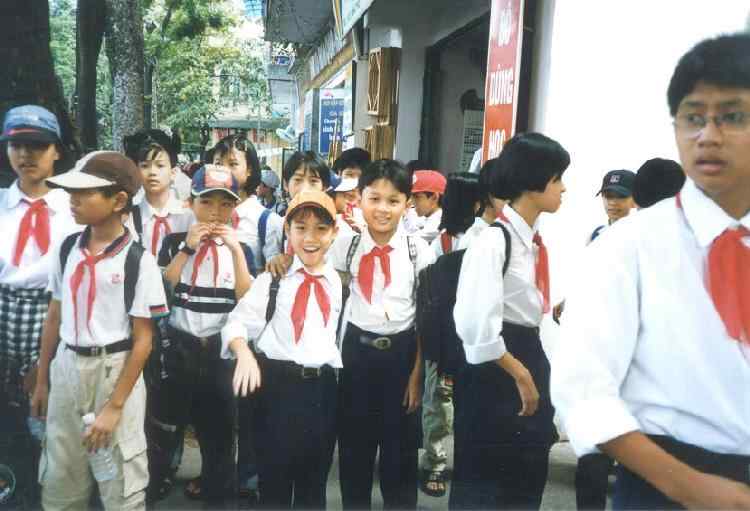
Figure 1.--Here we see a group of Saigon children after school in 2005. Notice the Young Pioneer scarves. |

|
We have only limited information on Vietnamese education at this time. We know nothing about tradition education bfore the French colonial era. The French intrduced a modern education system, but a limited one. The French made no effort to build a mass education system, but rather a small system aimed primarily at training an elite to help run the colonial administration. A Vietnamese student has provided us information about the country's current education system.
We have only limited information on Vietnamese education at this time. We know nothing about tradition education bfore the French colonial era. The French intrduced a modern education system, but a limited one. The French made no effort to build a mass education system, but rather a small system aimed primarily at training an elite to help run the colonial administration. The Communists launched a mass education system after winning the First Vietnam War (1953). That system was extended tonthe South after winning the Second Vietnam War (1975).
Primary Schools have a 5-year curriculum. We have few details about the curriculum. Most teachers however were trained under and utilize the French System which stresses teacher authority, class discipline, and general learning. A 2007 UNICEF report indicated that about 92 percent of school age children enroll in primary schools. An interesting aspect of primary education in Vietnam is that the enrollment statistics for girls is almost equal to that for boys. This is unusual for aeveloping country. The overall educational enrollment is also impressive for a relatively poor country. The percapita GDP is only avout $430 annually.
The secondary system is divided into two divisions. Unlike primary schools, there are substantial differences in the gender distribution with fewer girls choosing to or able to attend secondary schools.
The 4-year course of the first Division of the Secondary School System is
divided into classical and modern sections. Students of both sections study
a number of basic subjects, but those in the classical section study
classical Vietnamese literature while those choosing the modern section
study French or English.
The 3-year course of the second Division continues the general pattern of the first, but gives students the option of continuing their language studies or of substituting programs of natural science or of mathematics and phylosophy. The goal of secondary education is the stiff Baccalaureate examination. The baccalaureate is required for admission to the five year university program or to the advance technical
schools. The Vietnamese baccalaureate represents a standard at least as high
as the completion of 2-years at the American universities. In addition
there are a number of normal schools which provide high school teachers; an
industrial technical school of applied arts, where the traditional fine arts
of Vietnam are taught such as: goldsmithing, lacquer work, cabinet work,
and tapestry making.
At the university level, the National University of Viet Nam in Saigon is the most important. The university has a Faculty of Letters teaching Vietnamese literature, a Faculty of Jurisprudence, a Faculty of Medicine, Philosophy and History, and advanced schools of Engineering and Education.
Its scholastic standards are high. There are other Universities: University at Dalat and University at Hue as well as several technical schools of university rank, including an Institute of Public Administration operated in Saigon by Michigan State University. Higher education in foreign countries is greatly sought by advanced students. The Vietnamese government grants passports to study abroad to students taking courses not offered in Vietnam, and in any year at least 1,000 to 1,500 students will be studying abroad.
We have few details about Vietnamese school uniforms. We note some schools where the children are not wearing uniforms. At other schools the children where white shirts, both with and without red Young Pioneer scarves. At some school the children where the white shirts with what ever skirts and pants they care to wear. At other schools the boys where white shirts with blue pants. We are not positive, but decisions about uniform seem to be up to the local school.
Careful, clicking on these will exit you from the Boys' Historical Clothing web site, but several are highly recommended
Related Chronolgy Pages in the Boys' Historical Web Site
[Late 19th century]
[The 1930s]
[The 1940s]
[The 1930s]
[The 1940s]
[The 1950s]
[The 1960s]
[The 1970s]
[The 1980s]
Related Style Pages in the Boys' Historical Web Site
[Long pants suits]
[Knicker suits]
[Short pants suits]
[Socks]
[Eton suits]
[Jacket and trousers]
[Blazer]
[School sandals]
Navigate the Boys' Historical Clothing Web Page
[Return to the Main Asian school page]
[Return to the Main Indian country page]
[Introduction]
[Activities]
[Biographies]
[Chronology]
[Cloth and textiles]
[Clothing styles]
[Countries]
[Topics]
[Bibliographies]
[Contributions]
[FAQs]
[Glossaries]
[Images]
[Links]
[Registration]
[Tools]
[Boys' Clothing Home]
